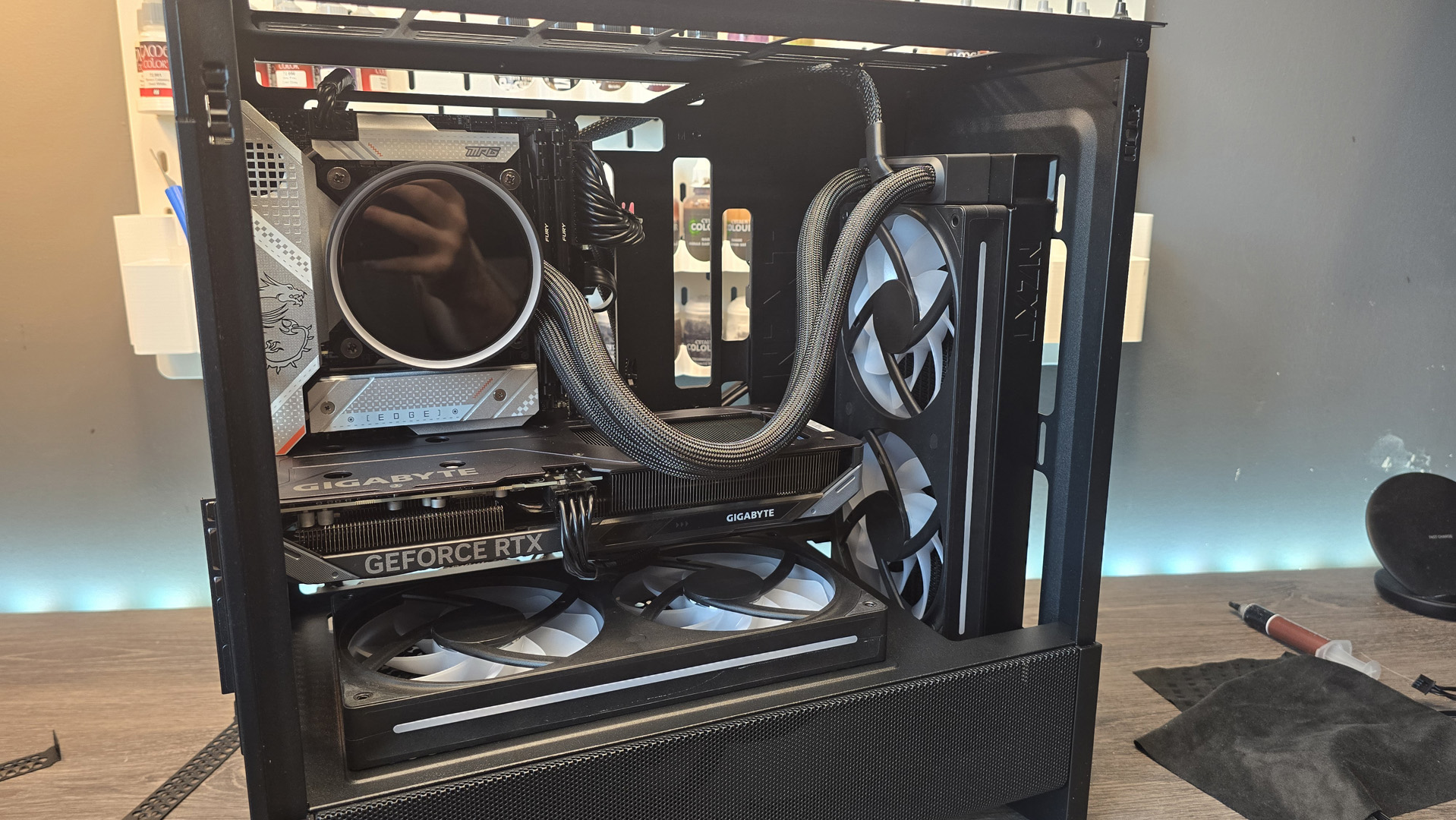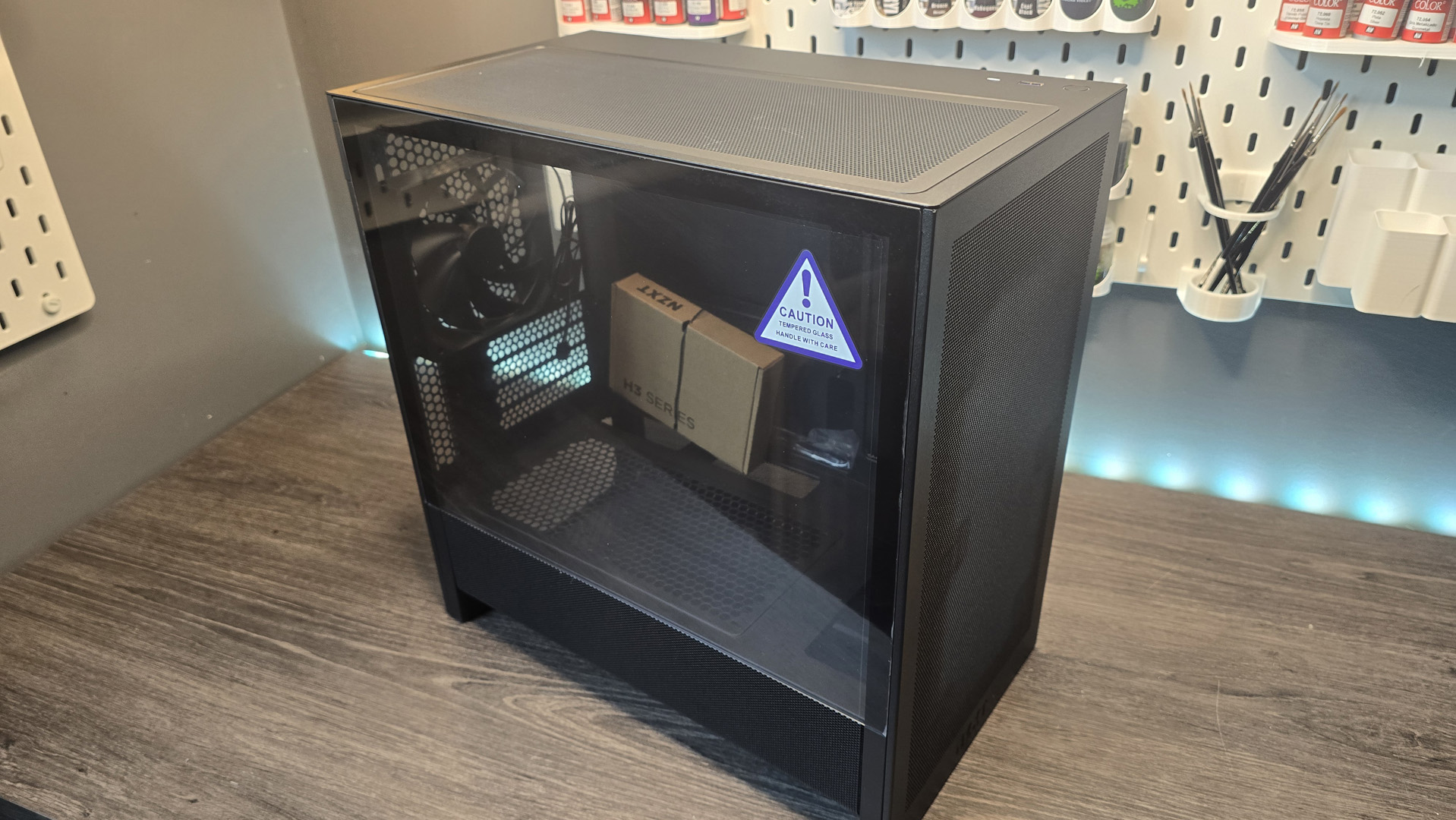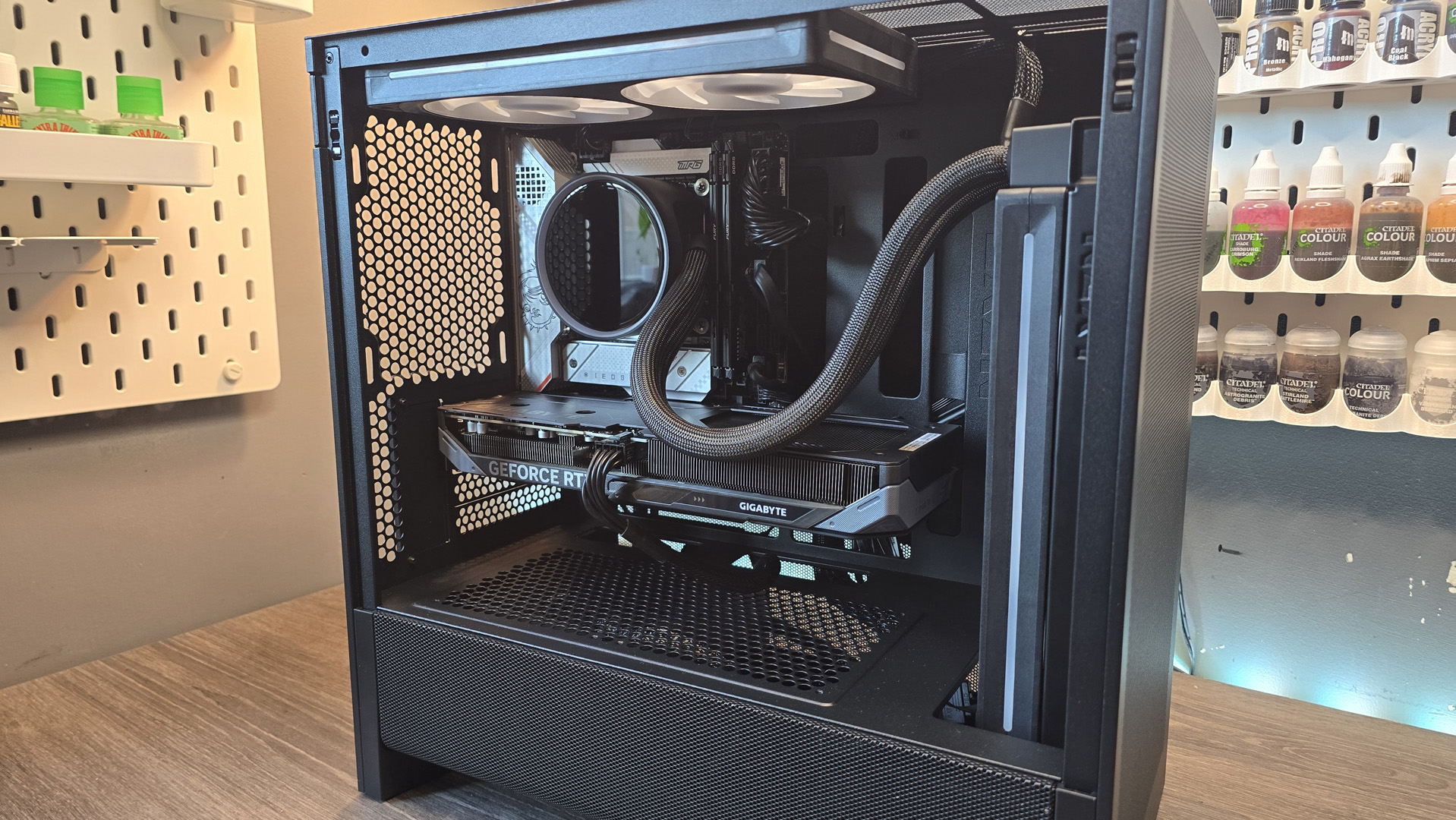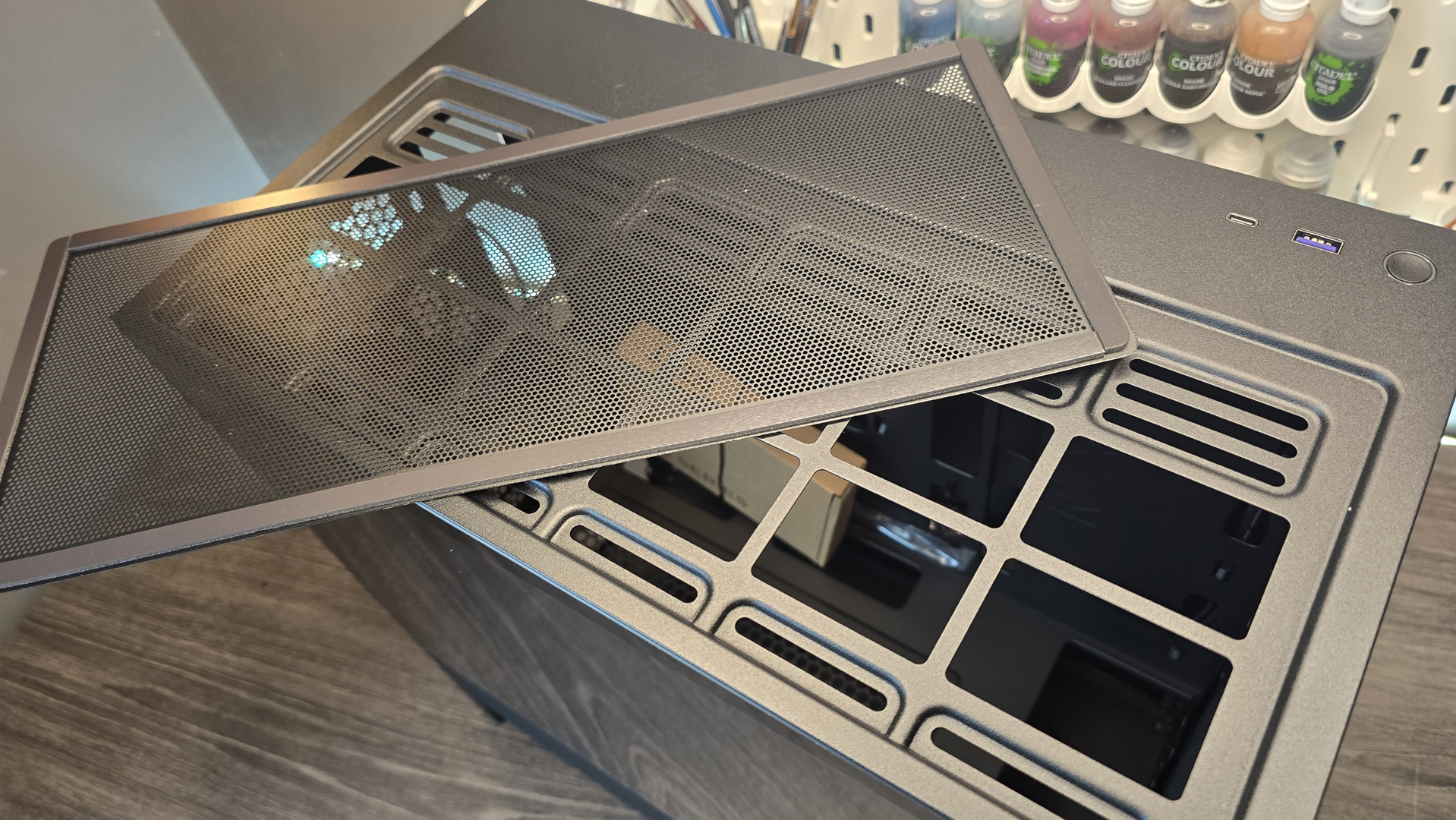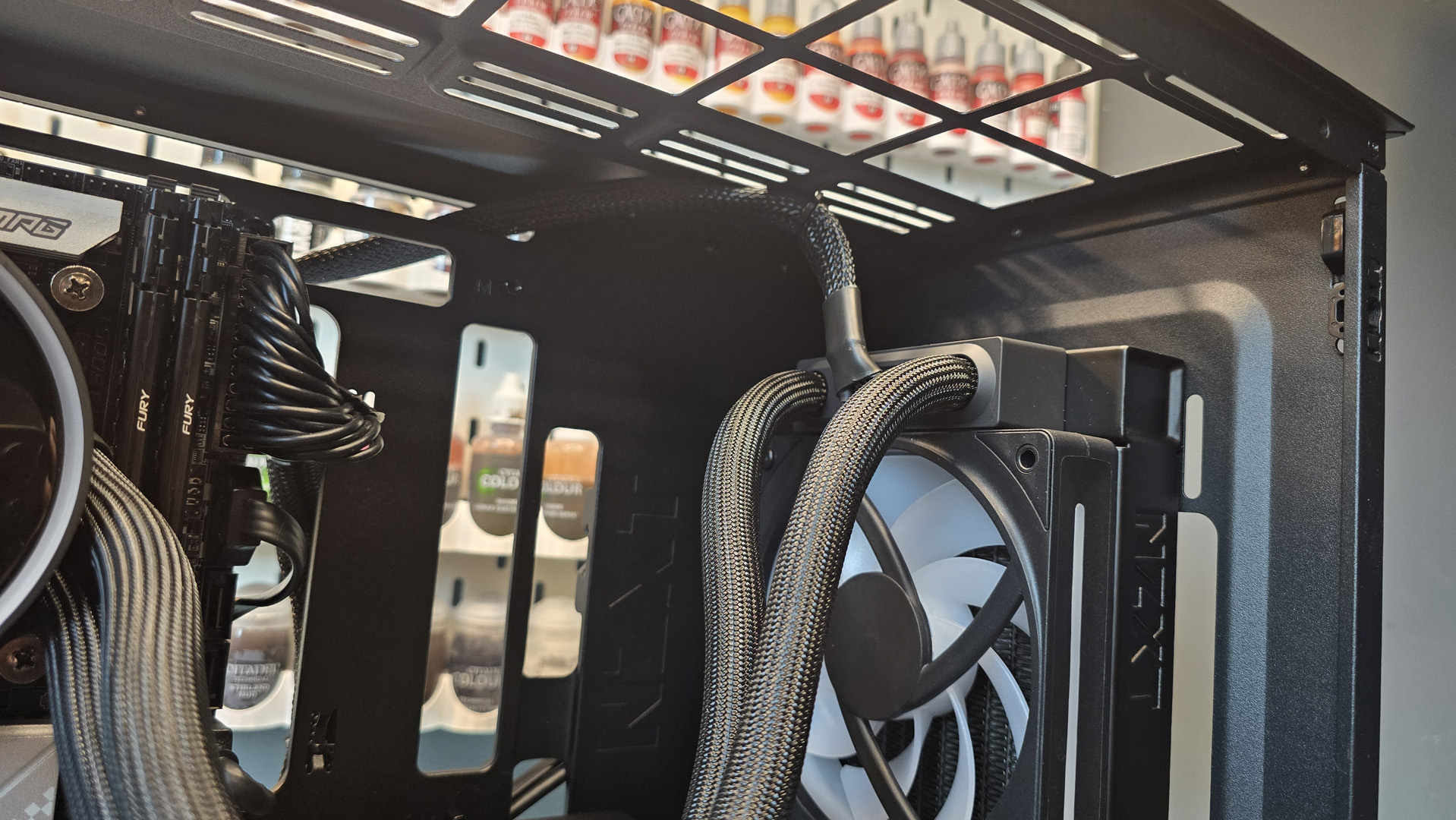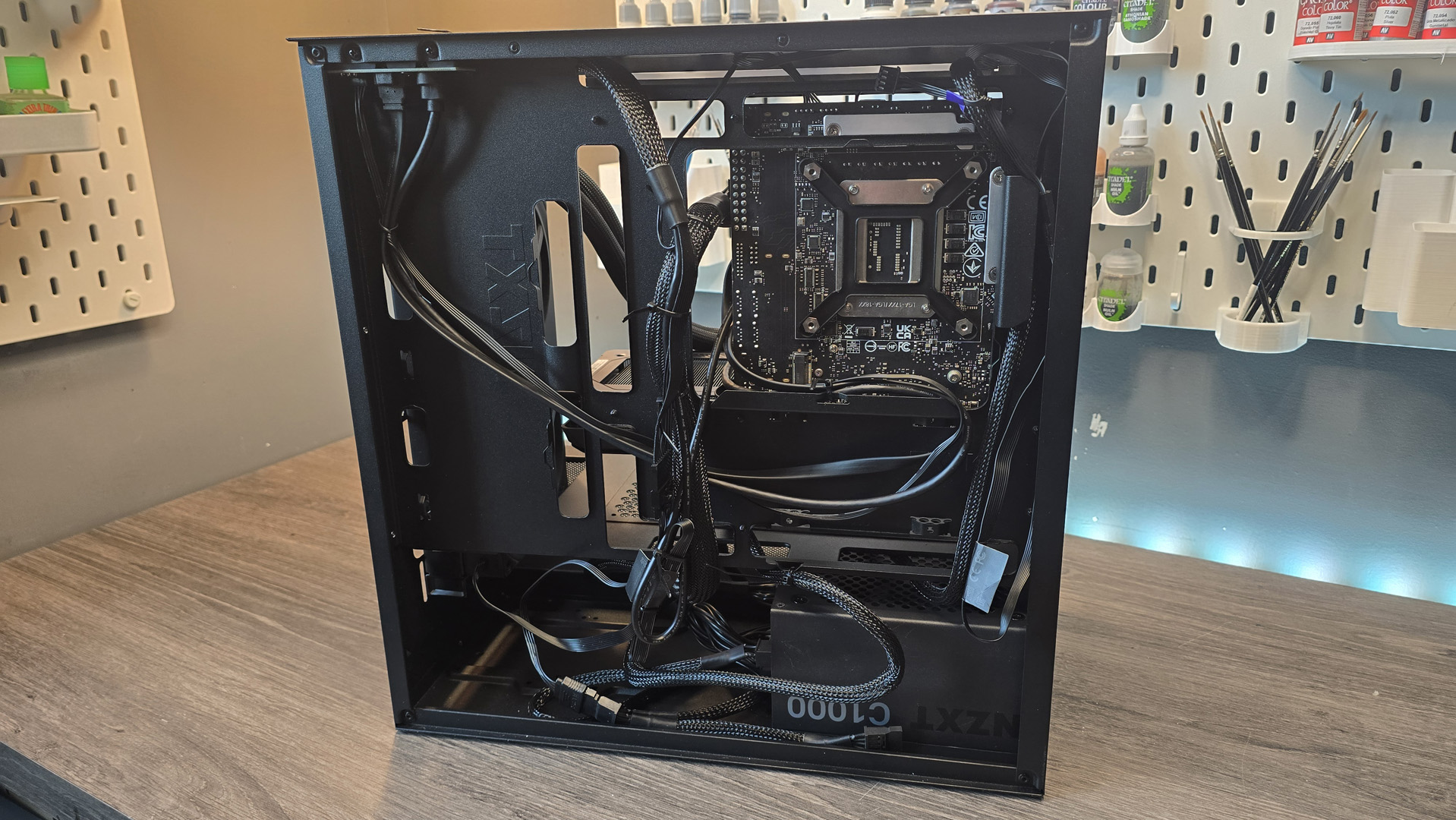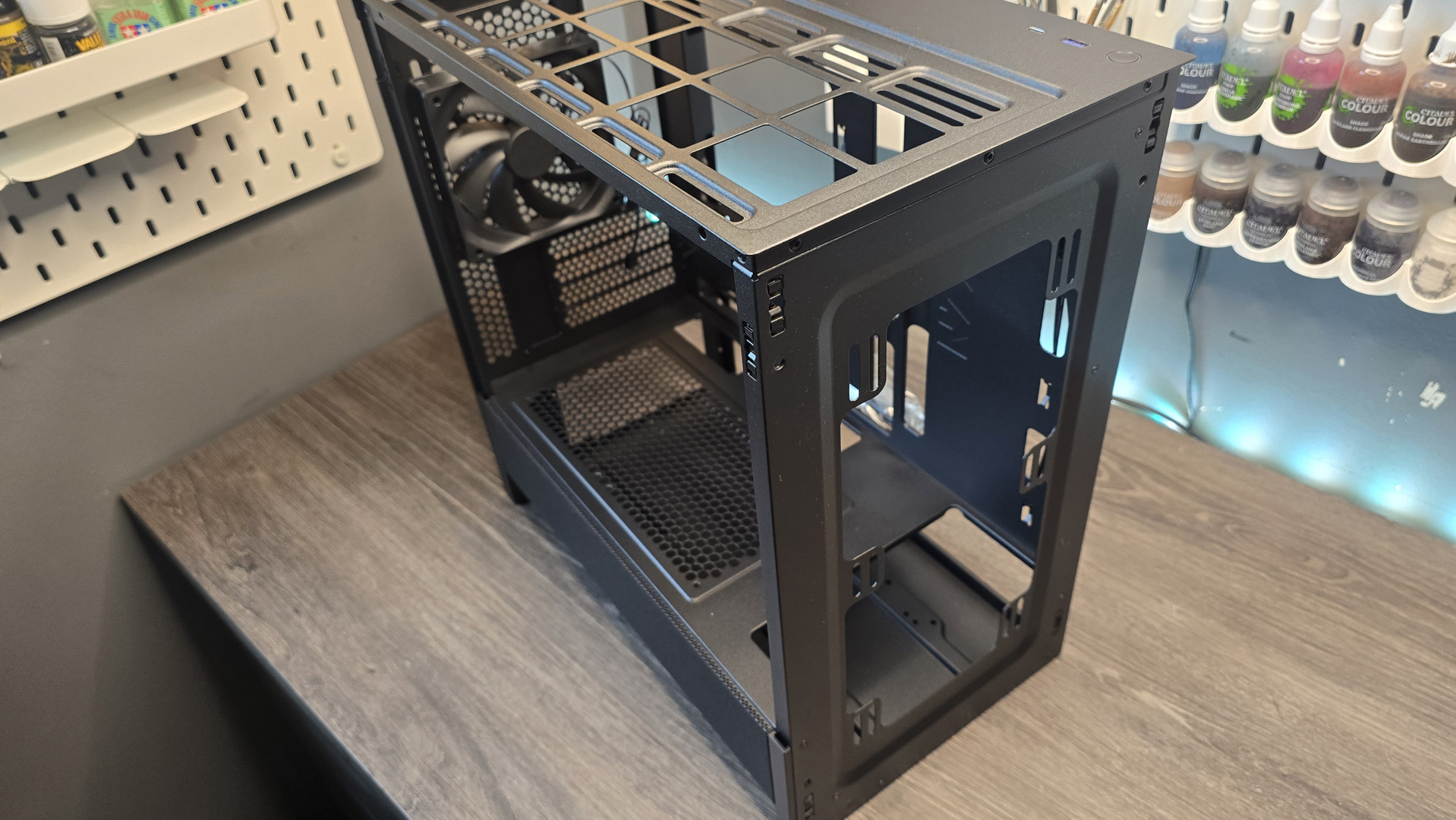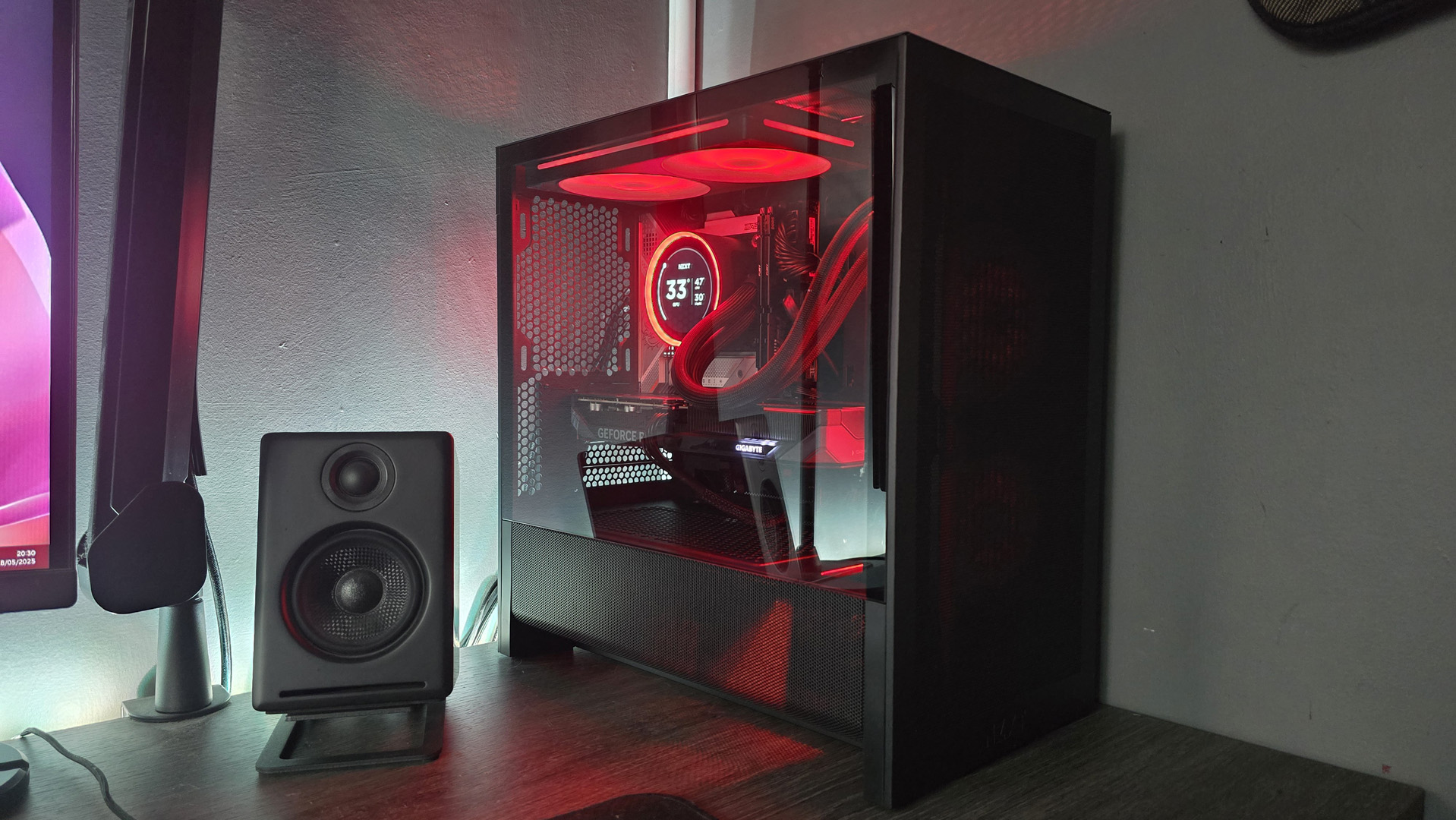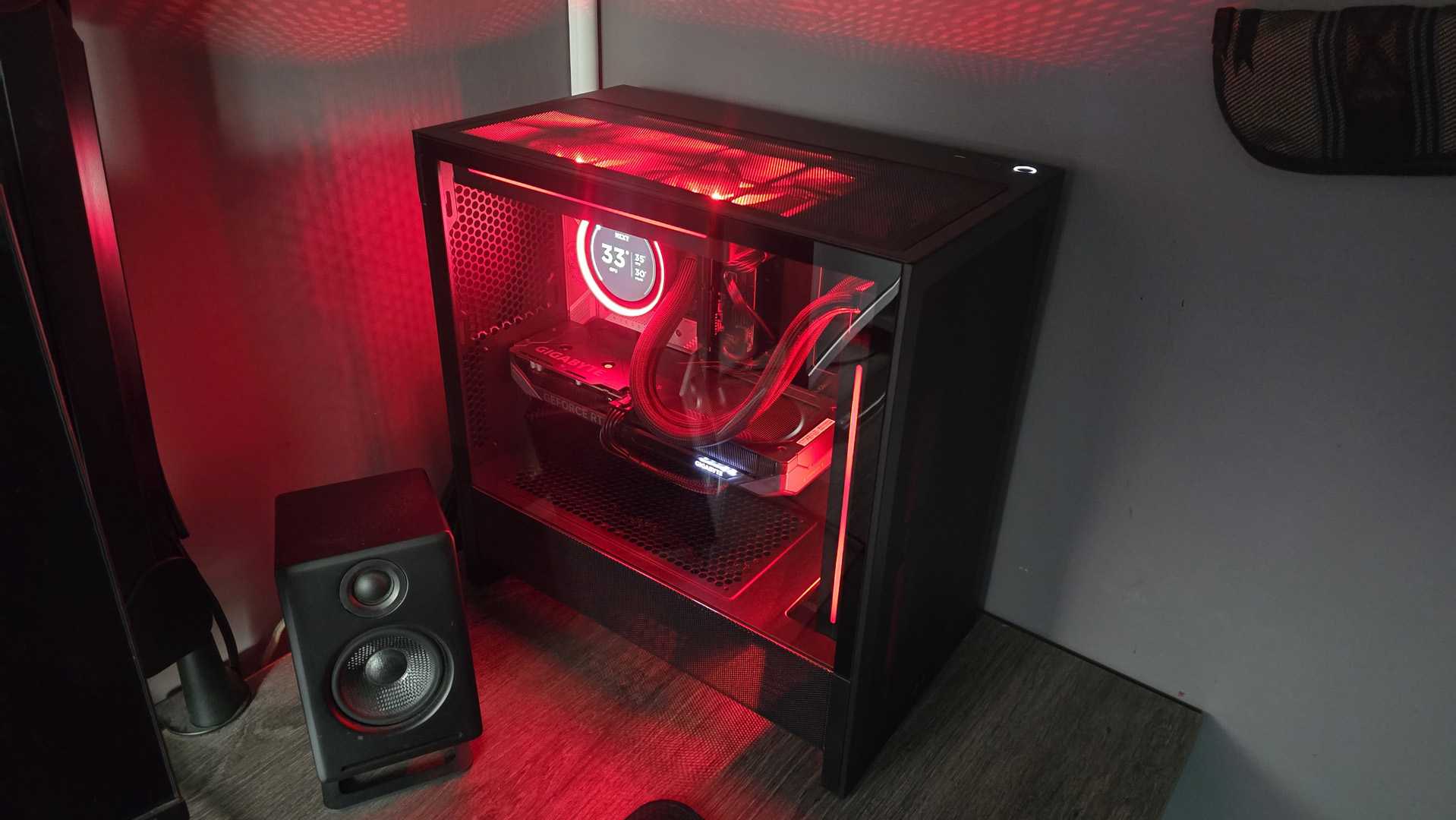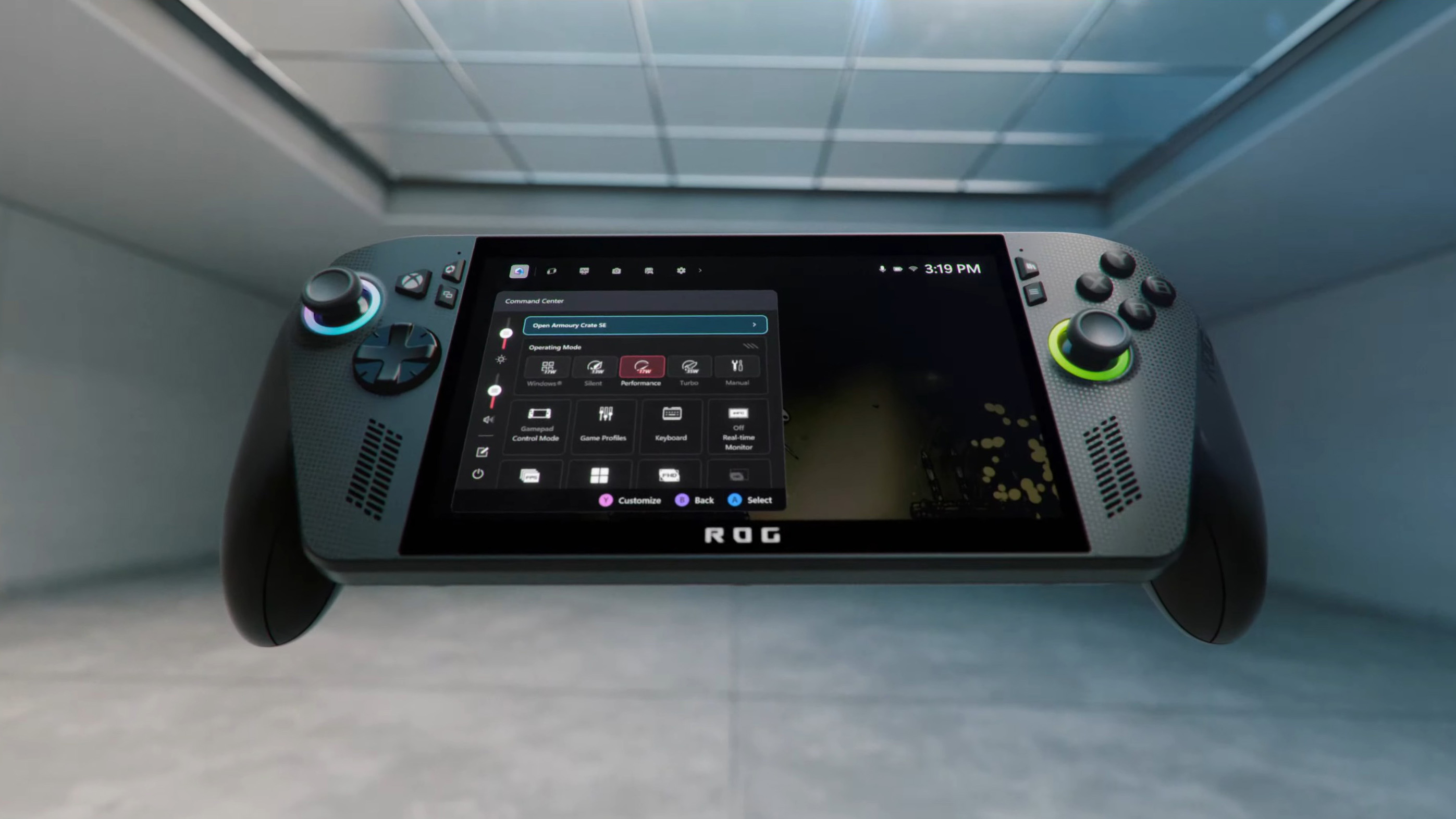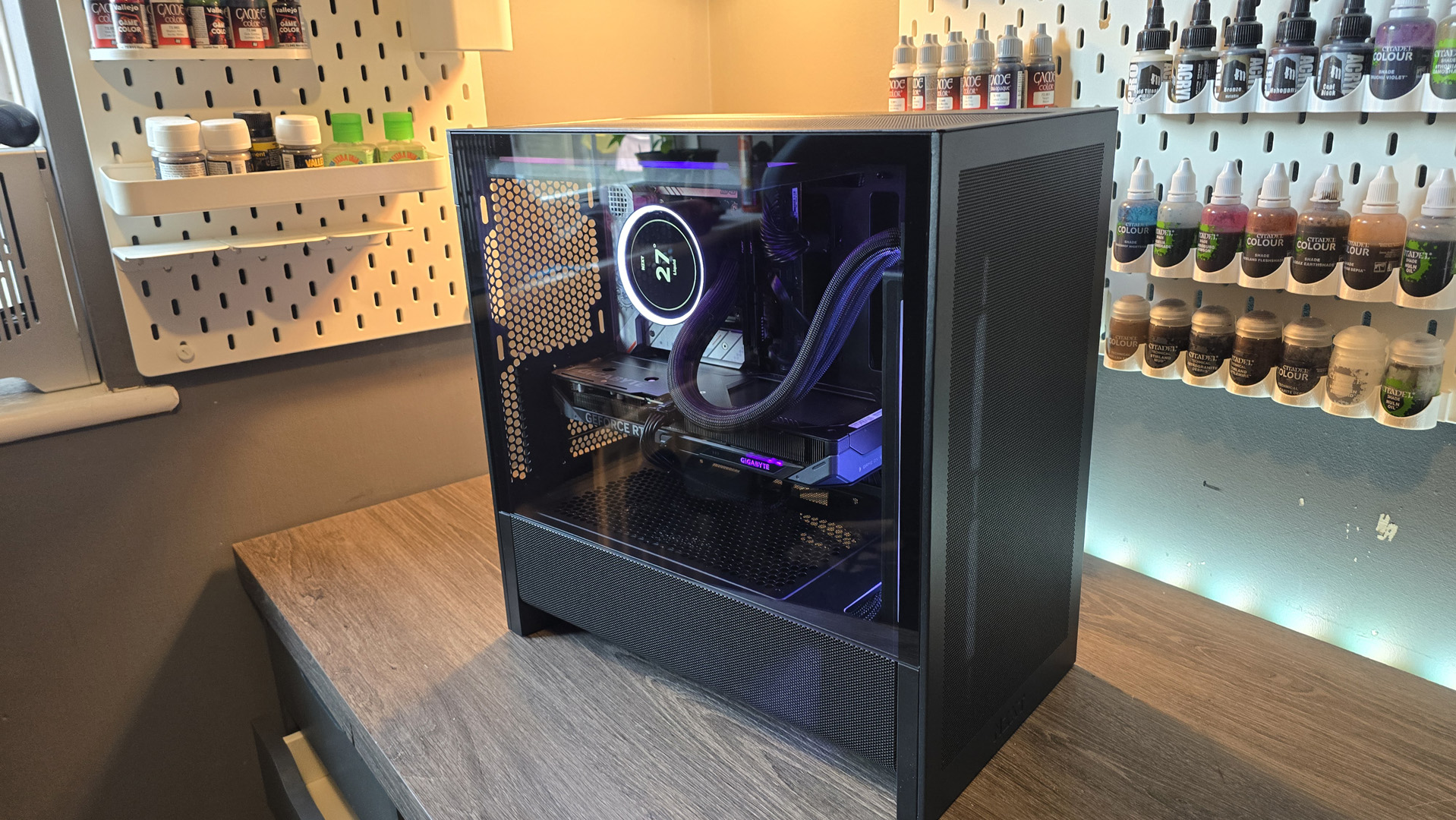
Bigger, bolder, and surprisingly versatile.
Case aficionados rejoice; we’ve been graced with not one but two new chassis launches from NZXT, side-by-side, and they couldn’t be any more different from one another if they tried. On the one hand, you have the big, bold, redefined, redesigned NZXT H9 Flow RGB+, complete with exhaustive 420 mm fan setups, plenty of mesh, a new shape, and an armada of cable management at a cost. And then, the other is well this, the NZXT H3 Flow.
ITX is, from a manufacturing perspective, a bit of a problem child. There’s not enough market volume for them to really heavily invest in the segment, and the folks who love those teeny tiny sleeper builds (myself included) have seriously high standards on what exactly constitutes a good ITX case and what they want out of it. It’s like making a coffee for your dad, but he’s a World Barista Champion and James Hoffman. You get the idea; we’re never happy.
The H3 is, in essence, a complete redesign of the H210 line that debuted way-back-when in 2019. But, unlike those early models, NZXT’s been listening and has radically altered and adjusted this small form factor offering to better cater to modern audiences. Or thereabouts anyway.
The first big takeaway is that, actually, this isn’t really an ITX case. Despite being just 400 x 225 x 389 mm in size, with a 35 L volume, the H3 Flow supports ITX and Micro-ATX as well. It can also hold GPUs up to 377 mm in length (if you opt to install your AIO in the roof and ditch the front fans), and there’s capacity for twin 280 mm radiators as well, plus a full-fat power supply in here too. In fact, I checked, it’ll even fit a full-sized RTX 5090 in here fairly comfortably, and thanks to that Micro-ATX support, it’s got the four PCIe slot covers there for even the chonkiest of graphics cards.
Form factor: SFF
Dimensions: 40.0 x 22.5 x 38.9 cm
Motherboard support: ITX, mATX + Back connectors
Expansion slots: 4 horizontal
Front IO: 1x USB 3.2 Gen 1 Type-A, 1x USB 3.2 Gen2x2 Type-C
Total fan support: 7
Fan count: 2x 120/140mm TOP, 2x 120/140mm FRONT, 2x 120mm PSU, 1x 120mm REAR
Radiator support: Up to 280 mm FRONT, Up to 240mm TOP
Graphics card support: 377 mm length (without front fans + rad)
Storage: 1+2x 2.5-inch; 1x 3.5-inch
PSU support: ATX (up to 185 mm)
Weight: 4.8 kg
Price: $80 | £65 | €80
That also gives us access to larger VRM solutions, more M.2 support, and internal headers as well. Which, in a world of curved OLED AIO displays, cheap(er) storage, and fan controllers sucking up every USB 2.0 header in sight, is no bad thing.
The biggest issue NZXT had with both its H210 line and, similarly, the now legendary Manta, is that they acted very much like large heat traps. With poor ventilation and spacing in the front panel and minimal exhaust, moving air through them was incredibly difficult, and that inevitably led to massive heat buildup. Those early H cases in particular were notorious for it, with temps easily hitting 95 to 100°C on some GPU setups over prolonged usage. The solution back then was often to take the window off entirely or the front panel to let the chassis breathe, not ideal.
The H3 Flow then, much like its larger numbered flowy siblings (the H7 Flow‘s a great example of this), has massively addressed this issue first and foremost. The front panel is now entirely perforated, there’s expansive support for cooling in the roof and the rear as well as the front, and the entire PSU bay below is ventilated across three out of the four sides, with the only solid panel being the base. There’s no mesh filter adding turbulence either, bar one in the roof acting as a dust filter.
Interestingly, though, given it’s a Flow chassis, it hasn’t hit every note in that mantra quite right. Take the fan situation, for example; you get just one 120 mm in the rear, and that’s it (although, to be fair, it is ridiculously cheap). Nothing pre-installed, no F series frames dotted about anywhere, no intake, and no fan controllers to help you manage the potentially seven that you could install in here. Plus, although it does support 140mm options (NZXT actually encourages that you use 140mm units in this case), there’s no official support for any 360 mm setups.
And it’s that last point that’s perhaps my biggest bugbear. It’s, ironically, just a tad too small. Take the roof, for instance. If you grab one of NZXT’s F360 Core fan frames and pop it in the top. It fits comfortably, and you could install two 140 mm fans in the front. But there’s no cutout to mount that F360 to the roof properly.
Then there’s the cable management. Hop around the back, and although it’s clearly BTF ready, very little has been done to really assist with keeping your cable mess tidy. There’s none of that signature NZXT channeling, Velcro straps, or similar. There are a few cable tie points, yeah, but it just feels massively underwhelming. You don’t even get rubber grommets to hide the mess you are making.
And then there’s the curious case of that cable cutout to the left of the NZXT logo on the motherboard tray. In the H9 Flow RGB+, it comes with a plastic cover that fits in that groove that you can pop out. If you’re using BTF, then keep it installed, and the case is super slick and clean; if not, pop it out and run your 24-pin through here instead. In the H3, it’s just a gaping hole, and given the rear panel is mostly perforated mesh, it makes it very easy for light to penetrate through and flag up any cables that might be draped across that back gap.
✅ You want epic airflow in a small form factor on a budget: The design is solid and a huge improvement over the old H210, making it ideal for the modern CPU and GPU era. Certainly at that price
❌ You’re looking for a premium case: It’ll look good when it’s done, but it’s not a joy to work in, and you’ll struggle with the cable management, that’s for sure.
There’s no radiator brackets here either, so you’re going to be fumbling around for a while, and NZXT’s also included mounting locations for two 120 mm fans above the PSU shroud, which is great, but they’re not recessed or particularly easy to get to to mount your fans on. If you’ve installed your power supply before your two 120 mm fans there, well, you’re stumped. Not quite the best PC case of all time then.
It honestly feels like this product was designed in 2022. Like it was a predecessor of NZXT’s latest revamp, an engineering sample meant to be a proof of concept in chassis aesthetic and featureset, and then they beefed up the entire lineup, added recessed fan mounting, better cable management, and more, then put the H3 on ice for a few years while releasing the mid-tower versions and above. It’s just not premium enough; it doesn’t work well enough with the products in NZXT’s own arsenal like it should, and that’s slightly frustrating to see, particularly given how highly the H9 Flow RGB+ ranks in comparison.
Still, wrap up your build inside the H3, stick a few RGB fans inside and a decent cooler, and what you’re left with is an incredible rig that looks the part and remains cool throughout. All in a nice tiny form factor, finally, at last, after six years. If you can live with the foibles, and the bugbears, and the first-world PC builder problems, and the price is right for you, then yeah, she’s a treat.
